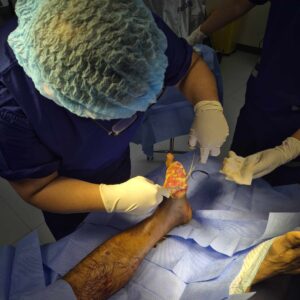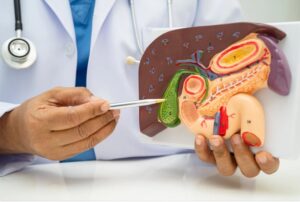Living with joint pain and stiffness can drastically alter daily routines. Millions of individuals face challenges related to arthritis, making it essential to understand the condition and explore available treatment options. This article covers key aspects of arthritis treatment, including detailed discussions on osteoarthritis and rheumatoid arthritis, common symptoms, diagnostic methods, and the range of management strategies available.
Understanding Arthritis
Arthritis is not a single disease but a term that encompasses various conditions affecting the joints and sometimes other body systems. Two of the most prevalent types are osteoarthritis (OA) and rheumatoid arthritis (RA). Each has its own causes, symptoms, and treatment protocols.
Osteoarthritis (OA): Osteoarthritis of the knee is frequently seen after joint injuries or as a result of wear and tear over time. This form of arthritis affects a significant portion of adults, particularly those between 45 and 60 years old. Changes in the joint, such as degeneration of articular cartilage, formation of bony growths (osteophytes), microfractures, and thickening of the underlying bone, lead to discomfort and reduced mobility. Many individuals find that simple daily activities, such as walking or climbing stairs, become increasingly difficult.
Rheumatoid Arthritis (RA): Unlike osteoarthritis, rheumatoid arthritis is a systemic autoimmune disease. It primarily affects the joints of the hands, wrists, shoulders, elbows, knees, ankles, and feet. The body’s immune system mistakenly targets its own tissues, leading to inflammation that can damage joint tissues and even affect organs such as the heart and lungs. RA often causes symptoms such as swelling, joint tenderness, and general fatigue, which can significantly interfere with everyday tasks.
Both conditions share the common trait of joint pain and stiffness, yet the underlying causes and progression differ. Recognizing these differences is a critical part of effective arthritis treatment.
Recognizing Common Symptoms
Awareness of the symptoms associated with arthritis is an essential step toward early diagnosis and successful management.
Joint Pain: Whether caused by osteoarthritis or rheumatoid arthritis, persistent joint pain is one of the most common complaints. With osteoarthritis, pain may start as a mild discomfort that worsens with activity. In rheumatoid arthritis, pain is often accompanied by noticeable inflammation.
Stiffness: Morning stiffness is a hallmark of both OA and RA. Patients with osteoarthritis often experience stiffness that gradually improves as the day progresses, while those with rheumatoid arthritis may have prolonged stiffness that lasts for hours.
Fatigue and Reduced Mobility: Chronic joint pain can lead to fatigue. Difficulty performing routine activities like getting out of bed, climbing stairs, or even standing for extended periods may signal the need for medical evaluation.
Additional Symptoms in Rheumatoid Arthritis: RA may also present with systemic issues such as fever, weight loss, and general malaise. Inflammation in the joints can produce clicking sounds, swelling, and noticeable restrictions in movement.
Recognizing these signs early on is key, as many individuals live with joint pain for extended periods before seeking appropriate help.
Diagnosis and Early Detection
Timely diagnosis plays a vital role in the success of arthritis treatment. Medical professionals utilize various techniques to confirm the type and severity of arthritis.
Clinical Assessments: A detailed medical history and physical examination are the first steps. Patients are asked about their symptoms, including the duration and intensity of pain, stiffness, and any functional limitations.
Imaging Techniques: X-rays, MRI scans, and ultrasound imaging help in visualizing the extent of joint damage, cartilage loss, and bone abnormalities. These tools are particularly useful for diagnosing osteoarthritis by identifying joint space narrowing and osteophyte formation.
Laboratory Tests: Blood tests can reveal markers of inflammation and the presence of specific antibodies. Rheumatoid arthritis, for instance, is often diagnosed with tests that detect rheumatoid factor (RF) and anti-citrullinated protein antibodies (ACPA).
Standardized Criteria: For osteoarthritis, many clinicians rely on established criteria that evaluate both clinical signs and imaging results. In cases of rheumatoid arthritis, a combination of clinical evaluation and laboratory findings helps form a diagnosis.
Early detection of arthritis symptoms allows for a timely intervention that can help reduce the progression of joint damage and improve quality of life.
Treatment Options for Osteoarthritis
Arthritis treatment for osteoarthritis often begins with conservative methods aimed at relieving pain and improving joint function.
Non-Surgical Interventions:
Physical Therapy and Exercise: Regular exercise and targeted physical therapy can help strengthen the muscles around the affected joint, providing better support and reducing pain. Low-impact activities such as swimming, cycling, and walking are often recommended.
Pain Medications: Over-the-counter pain relievers like acetaminophen or non-steroidal anti-inflammatory drugs (NSAIDs) may be used to manage discomfort. In more severe cases, doctors might prescribe stronger medications or topical treatments.
Weight Management: Maintaining a healthy weight reduces stress on weight-bearing joints. Weight loss can lead to significant improvements in symptoms and overall joint function.
Surgical Procedures:
Joint Repair and Replacement: When non-surgical treatments fail to provide adequate relief, surgical options may be considered. Procedures range from minimally invasive arthroscopy to full joint replacement. These surgeries can restore mobility and reduce pain, although they come with the need for rehabilitation and recovery.
A comprehensive plan for osteoarthritis treatment often involves a combination of these approaches, tailored to the severity of the condition and the patient’s lifestyle.
Treatment Options for Rheumatoid Arthritis
Rheumatoid arthritis requires a more complex treatment approach due to its autoimmune nature. The goal is to control inflammation and prevent joint damage while addressing systemic effects.
Medication Regimens:
- Disease-Modifying Anti-Rheumatic Drugs (DMARDs): DMARDs are the cornerstone of rheumatoid arthritis treatment. They work by slowing the progression of the disease and reducing joint inflammation. Early initiation of DMARD therapy can prevent significant joint damage over time.
- Biological Agents: For patients who do not respond adequately to traditional DMARDs, biological therapies can be effective. These medications target specific components of the immune system, helping to control the inflammatory process more precisely.
- Anti-Inflammatory Drugs: Corticosteroids and NSAIDs can provide rapid relief from inflammation and pain. While effective in the short term, they are generally not used as a long-term solution due to potential side effects.
Non-Medication Strategies:
- Physical and Occupational Therapy: Tailored exercise routines and occupational therapy help maintain joint flexibility and strength. Therapists provide guidance on techniques to reduce joint strain during daily activities.
- Lifestyle Modifications: Adjustments in daily habits, such as pacing activities and incorporating rest periods, can help manage fatigue and joint pain. A balanced diet rich in anti-inflammatory foods may also contribute to symptom management.
The treatment of rheumatoid arthritis is an ongoing process that often requires adjustments over time. Regular consultations with healthcare providers ensure that treatment plans remain effective and responsive to changes in the condition.
Daily Management and Self-Care Techniques
Effective arthritis treatment extends beyond medical interventions. Daily management and self-care strategies play a significant role in improving quality of life.
Exercise and Movement: Routine physical activity is crucial. Gentle exercises such as stretching, yoga, or water aerobics can help maintain joint flexibility. It is important to choose activities that do not place excessive strain on the joints.
Nutritional Guidance: A well-balanced diet supports overall health and can reduce inflammation. Foods rich in omega-3 fatty acids, antioxidants, and fiber may help lower inflammatory markers. Staying hydrated and avoiding excessive processed foods are also beneficial.
Sleep Quality: Joint pain can interfere with sleep, creating a cycle of fatigue and increased pain. Developing a bedtime routine and using supportive pillows or mattresses can improve sleep quality, contributing to better overall well-being.
Stress Reduction: Chronic pain often leads to increased stress, which in turn can exacerbate arthritis symptoms. Techniques such as mindfulness, deep-breathing exercises, and engaging in enjoyable hobbies help reduce stress levels.
By incorporating these self-care techniques, patients can experience significant relief from daily discomfort and improve their overall functionality.
Advances and Future Prospects in Arthritis Treatment
Research into arthritis treatment continues to evolve, offering hope for better management and potentially even prevention of joint damage.
Innovative Therapies: Scientists are exploring novel treatments that target the specific pathways involved in joint inflammation and degeneration. Advances in medication and biological therapies promise improved outcomes for both osteoarthritis and rheumatoid arthritis patients.
Technological Developments: The use of advanced imaging and diagnostic tools is leading to earlier and more accurate detection of arthritis. Improved monitoring techniques enable doctors to better assess the progression of the disease and adjust treatments accordingly.
Personalized Treatment Plans: Ongoing research is focused on developing treatment strategies that are more closely aligned with the unique needs of each patient. This individualized approach aims to improve efficacy and reduce side effects.
While these emerging treatments are still under investigation, they represent a significant step forward in the quest to alleviate joint pain and improve mobility for arthritis sufferers.
Takeaway
Effective arthritis treatment involves a careful combination of medication, physical therapy, lifestyle adjustments, and, in some cases, surgical intervention. Recognizing early symptoms and seeking professional guidance can make a substantial difference in long-term joint health. Whether dealing with osteoarthritis or rheumatoid arthritis, a proactive approach helps reduce pain and maintain mobility.
For individuals experiencing persistent joint pain and stiffness, it is important to consult with healthcare professionals who can provide a personalized treatment plan. Regular check-ups and monitoring can ensure that treatments remain effective as the condition evolves.






